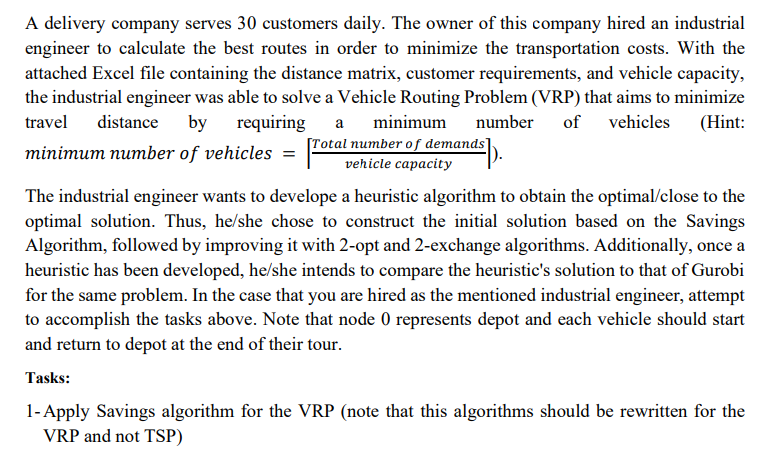Answered step by step
Verified Expert Solution
Question
1 Approved Answer
Solve it using the Clarke and Wright savings method. Write the demand constraint as code. PLEASE USE PYHTON 3. minimum number of vehicle needed =




Solve it using the Clarke and Wright savings method. Write the demand constraint as code. PLEASE USE PYHTON 3.
minimum number of vehicle needed = 3. number of customer= 10, vehicle capacity for each vehicle = 40 , demand for each customer=10. This capacitated vehicle routing problem should be solved using the Clarke and Wright savings method. please use PYHTON 3. 

minimum number of vehicle needed = 3. number of customer= 10, vehicle capacity for each vehicle = 40 , demand for each customer=10. This capacitated vehicle routing problem should be solved using the Clarke and Wright savings method. please use PYHTON 3. 

Step by Step Solution
There are 3 Steps involved in it
Step: 1

Get Instant Access to Expert-Tailored Solutions
See step-by-step solutions with expert insights and AI powered tools for academic success
Step: 2

Step: 3

Ace Your Homework with AI
Get the answers you need in no time with our AI-driven, step-by-step assistance
Get Started


